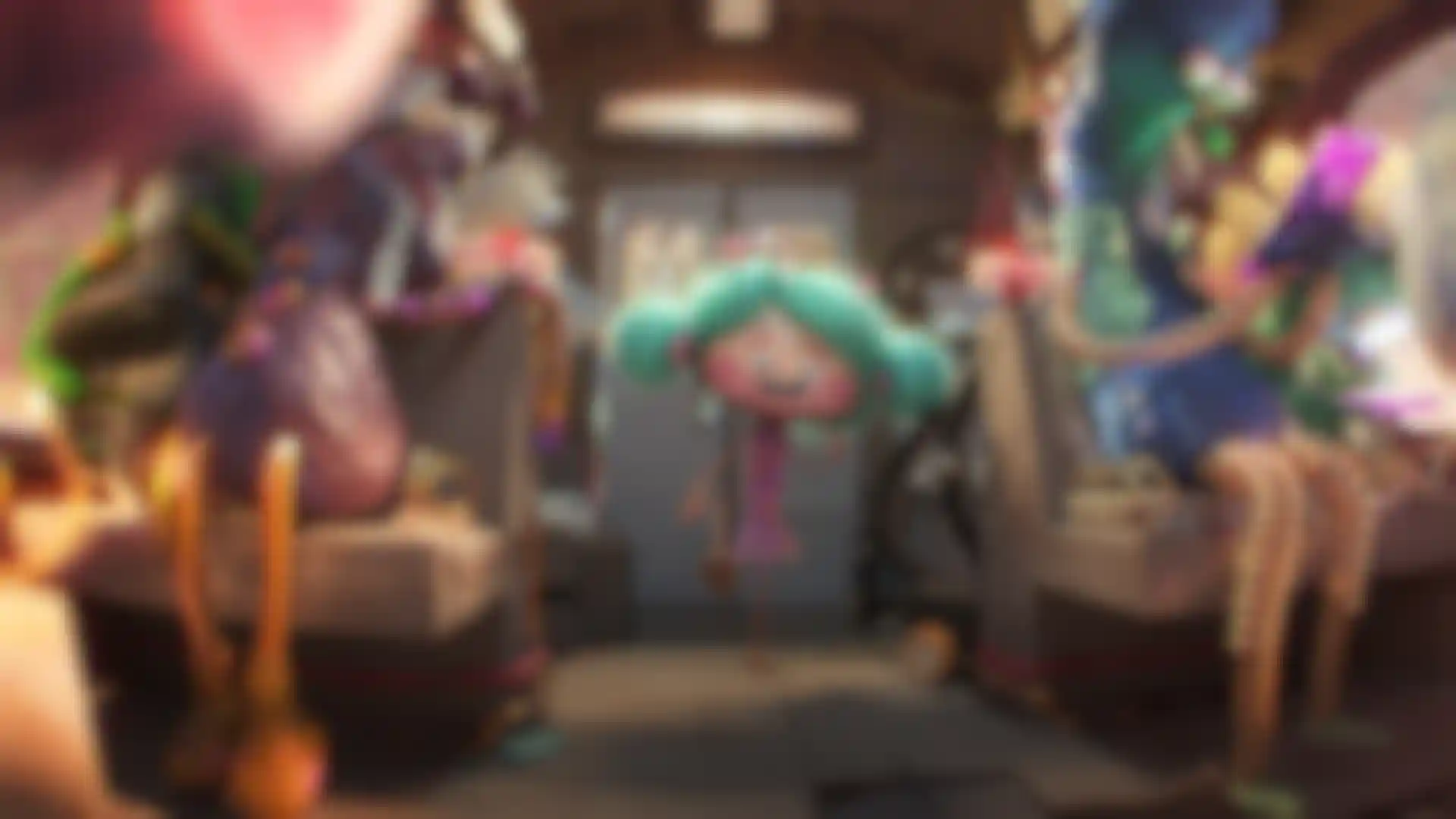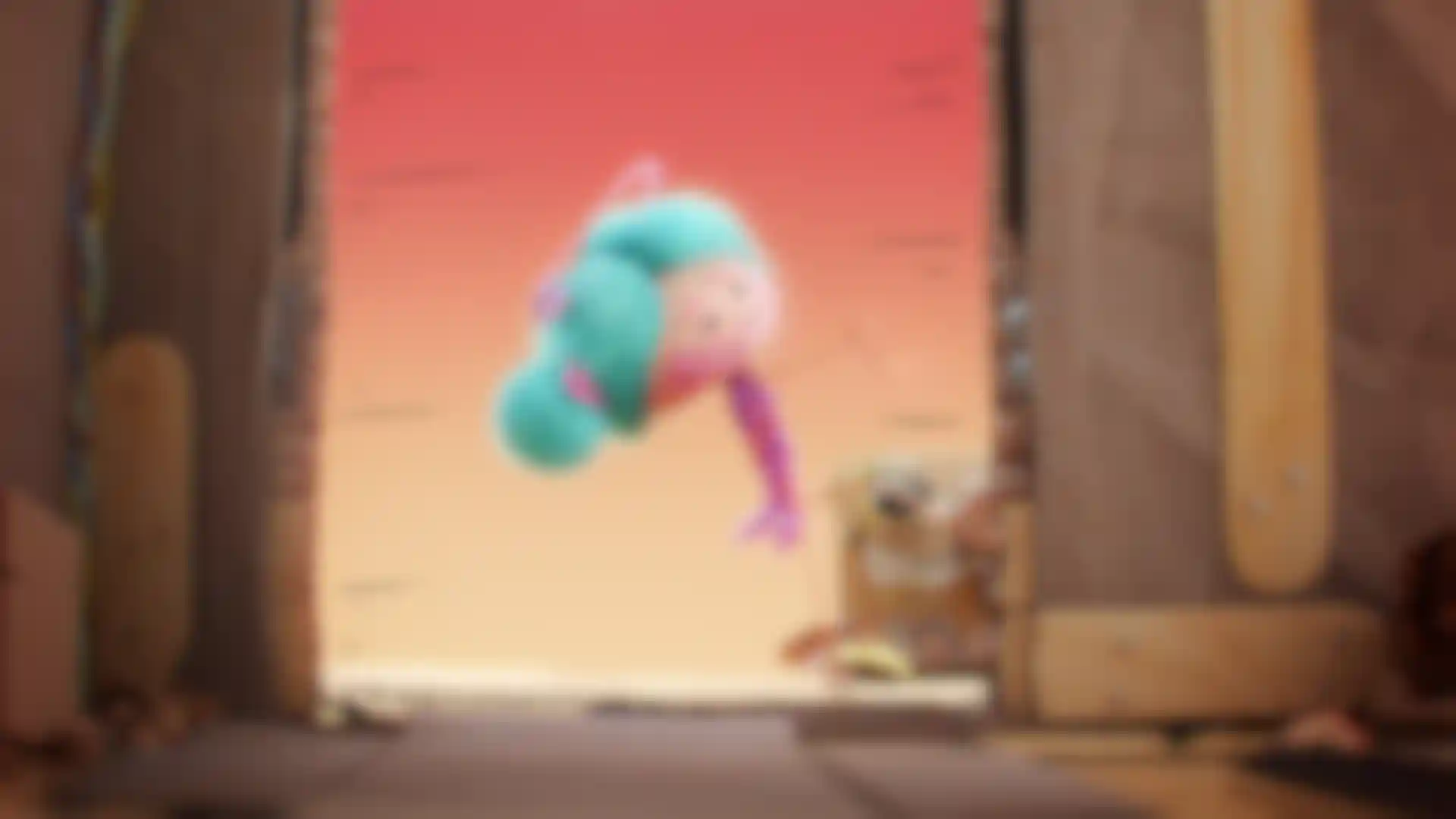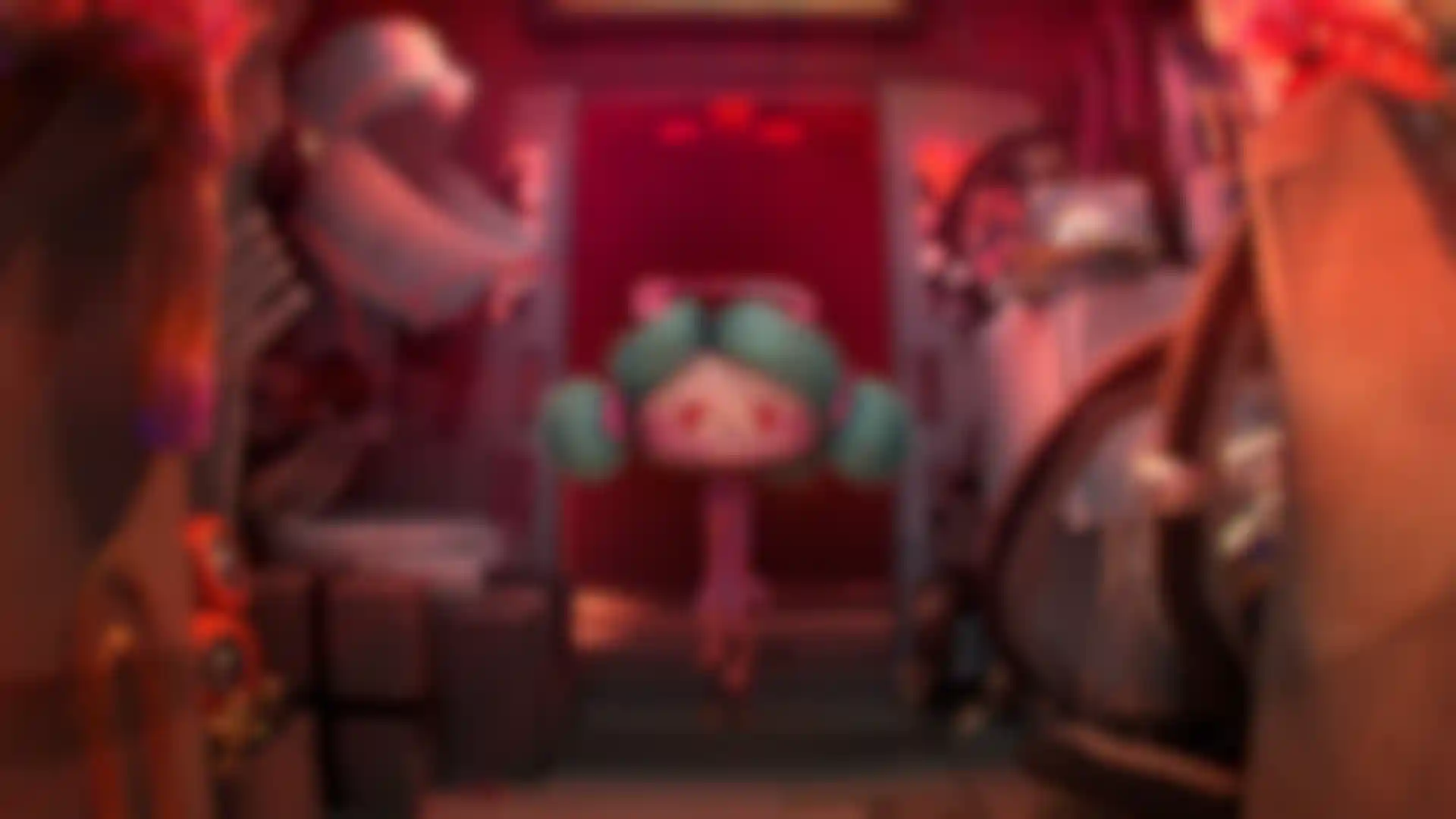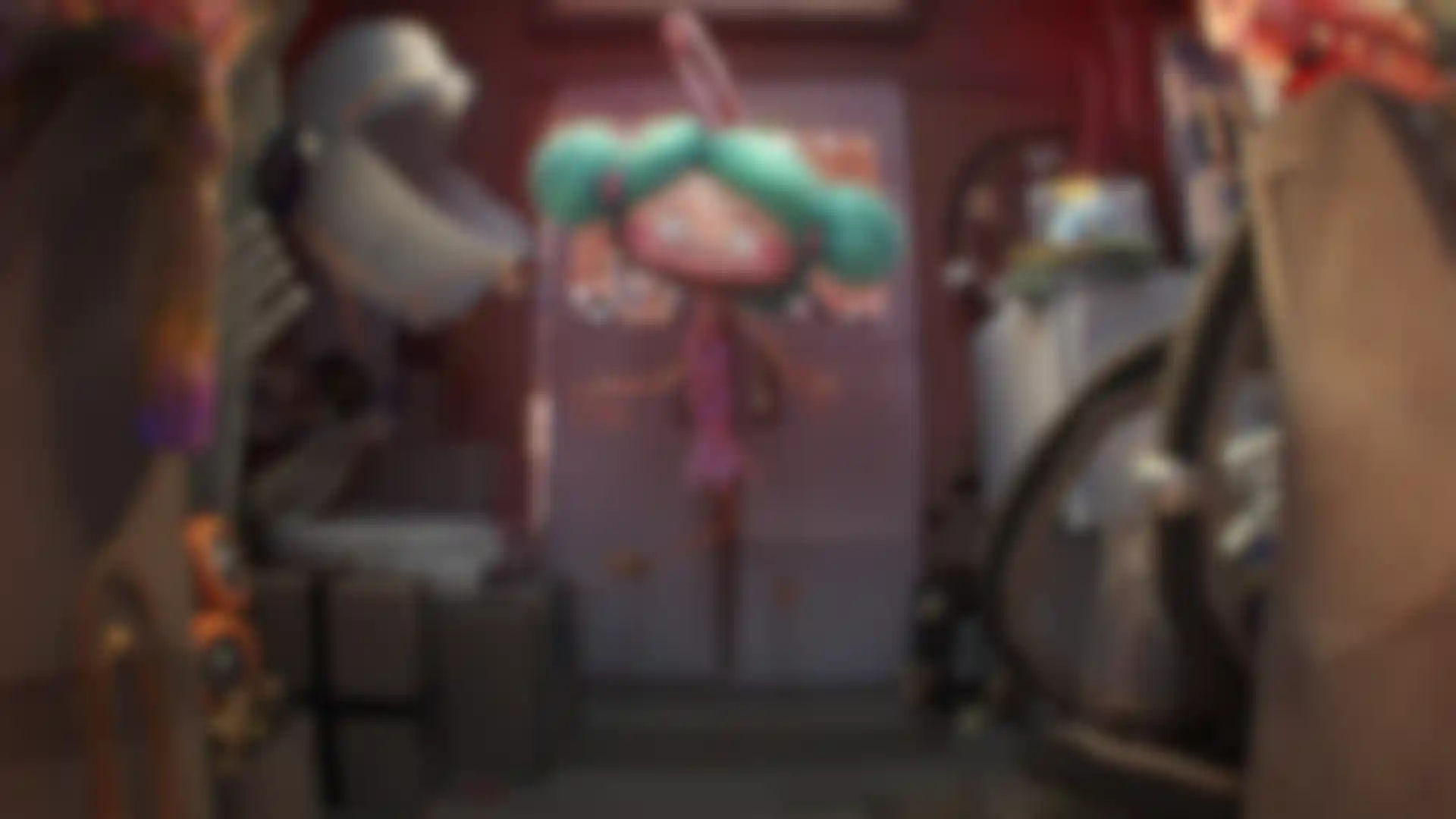
A Simple Train Ride Goes Awry in a New Short Film Made With Maxon One Former classmates wow festivals with their short film ‘Daily Tales Part 1: The Magnificent Beauty of a Train Ride.’
A stop-motion-inspired homage to lo-fi simplicity and universal experiences, “Daily Tales Part 1: The Magnificent Beauty of a Train Ride,” is a heart-warming animated film about everyday frustrations and moments of kindness.
Made using Cinema 4D, Redshift, Photoshop, Red Giant tools, and After Effects, this charming film follows protagonist Mini on a public transport journey that is far from simple.
University friends and collaborators Alexander Dietrich and Johannes Flick made the film in collaboration with producer Mareike Keller. We talked to Dietrich and Flick about the project, which they saw as an opportunity to build on the success of their diploma project, “Shine.”
Tell us how you ended up collaborating and what are you doing now.
Keller: We met at the Animation Institute, part of Filmakademie Baden-Württemberg in Germany, where Alex and Johannes studied animation, and I studied both animation and VFX production.
During the course, Alex and Johannes had been working together as a director-artist team, completing several projects before I met them. In 2014, the three of us joined forces for our diploma film “Shine,” which did very well at festivals and won us funding credits that helped make this project possible.

I am now a freelance producer working on commercials, VFX, animation and independent short movies for numerous companies and projects. Alex is an art director and animator at Woodblock Animation Studio, and Johannes is a designer and animator at Bär Tiger Wolf.
What inspired “Daily Tales,” and how did you manage it alongside your work?
Keller: After graduating, we worked for different companies but wanted to build on the success of “Shine” with a new collaboration. We all lived close to Stuttgart and spent much time stuck on trains. We thought there should be a movie about the little daily hurdles of train rides that everyone can relate to. With a small budget from our funding credits and a great story from Alex, we met regularly on weekends to make the film.

That was in late 2019 and when Covid hit, we had to shift to online collaboration due to the restrictions. Luckily, we could work from home, but juggling work and family responsibilities meant our initial one-year production timing stretched into three years. Our strong teamwork and friendship helped us complete the project, and we are happy to finally share the film with the world.
Dietrich: Making a film is a great way to experiment with software. Cinema 4D is still the software I feel most comfortable with, so this was an opportunity to get up to speed with new features. For Johannes, it was the perfect opportunity to finally learn Redshift without the pressure of client deadlines.
We had initially planned it as an opportunity to work together again on a project combining a physical set with 3D characters in a stop-motion style, a process we all enjoy. However, it turned out that we could not work with a physical set due to Covid. The childish visuals felt like a nice counterbalance to the “over the top” and loud actions in the film.
Talk about your workflow. Were there any surprises along the way?
Dietrich: With Mareike producing, I was responsible for design, character development, modeling, rigging and animation; Johannes handled the 3D modeling of the environment, rendering with Redshift, compositing and grading.
Most of the design work was done in Photoshop, but some elements were entirely designed and modeled in Cinema 4D. In fact, Cinema 4D was the complete backbone of everything we did until taking the Redshift renders to After Effects for compositing.

We had initially planned to build physical sets and props and started gathering ideas about how to tell our story with everyday materials from around the house. Because of Covid restrictions, we decided to go full CG, so the style we wanted to achieve stayed the same, but how we got there changed.
An unexpected bonus was how much we liked the character expressions in our animatic. We over-exaggerated them to convey the emotion as clearly as possible, so our messy drawings actually informed a lot of the character choices of modeling, rigging and animation.

How did you create the materials for the main character?
Flick: When we designed Mini, we made our material choices based on how we would build her in the real world. We used wires for hair and fabric for everything that was supposed to move a lot. We used clay for her head, which was supposed to deform a little, and wood for her feet, which were rigid.
The hair probably sticks out the most, and Cinema 4D’s Hair system made it an absolute charm to create using traditional grooming tools, allowing us to brush the hair into place. The pink threads that make up her body and eyebrows were splines rendered with a hair material. This way, we could easily manipulate them with C4D’s rigging and deformer tools.

Small details like the googly eyes and different paper stick-on mouths were added later. The nice thing about our paper mouths was that we could create new ones while animating specific shots whenever we needed a more extreme expression.
With only Alexander and me on development, it was easy to do a lot of one-off solutions whenever the standard rig wasn’t extreme enough for specific shots. We used FFD or camera deformers placed into a null object containing our character to deform everything at once.
For anything paper, cardboard or wood-related, we took photos of what we found lying around, cleaned them up, made them tileable in Photoshop, and used them as textures in our materials throughout the project.
What new features did you find helpful in modeling and rigging?
Dietrich: I found great shortcuts that helped speed up the workflow. Almost everything made from clay was done using C4D’s Volume system with just splines and simple geometry as the volume source objects.
For everything paper or cardboard, we used the new Thicken Generator to add some dimension to the objects. And the overall wonky character style helped a lot in rigging. Nothing had to be super precise, and many solutions could be quick and dirty.

What stood out about working with Redshift for the first time?
Flick: With Redshift, it was easy to tweak every last aspect of the render. For me, the takeaway was that instead of a classic play blast, which you see in the viewport while animating, you could also have a quickly rendered version where you see shadows and reflections — perfect for checking geometry intersections or other animation issues.
Can you share any new insights you gained from this experience?
Dietrich: I think that with the technical limitations of 3D, there’s a tendency for projects like this to get a little tamer and less vibrant to avoid pushing those limitations. I was really happy with how well the extreme expressions worked from the animatic to the final film, and how some shortcuts really helped us.
I encourage everyone to be more extreme at the outset and less concerned with precision. So don’t be afraid to try things and trust your choices: if it looks good and works, it’s great.

How is the film doing on the festival circuit, and what do festivals offer?
Flick: So far, the reception has been great, and it’s wonderful to finally see people’s reactions in the real world. Festivals are one of the best places to get inspired because you meet so many people who are obsessed with the same things but have different approaches. It’s such a wonderful opportunity to share what we do, absorb what others do, and talk about everything that moves us in our personal and professional lives.
Helena Swahn is a writer based in London, UK.





